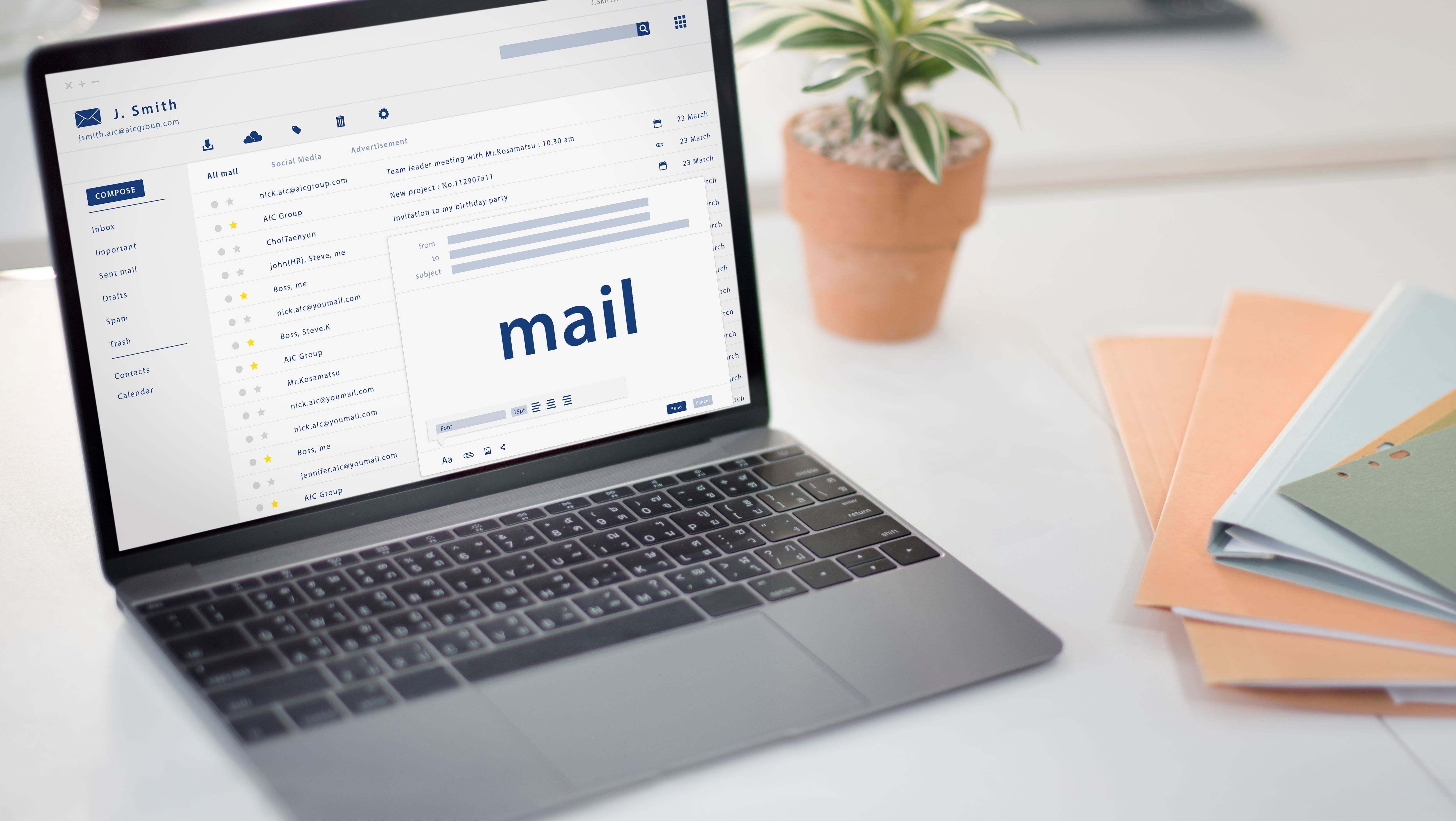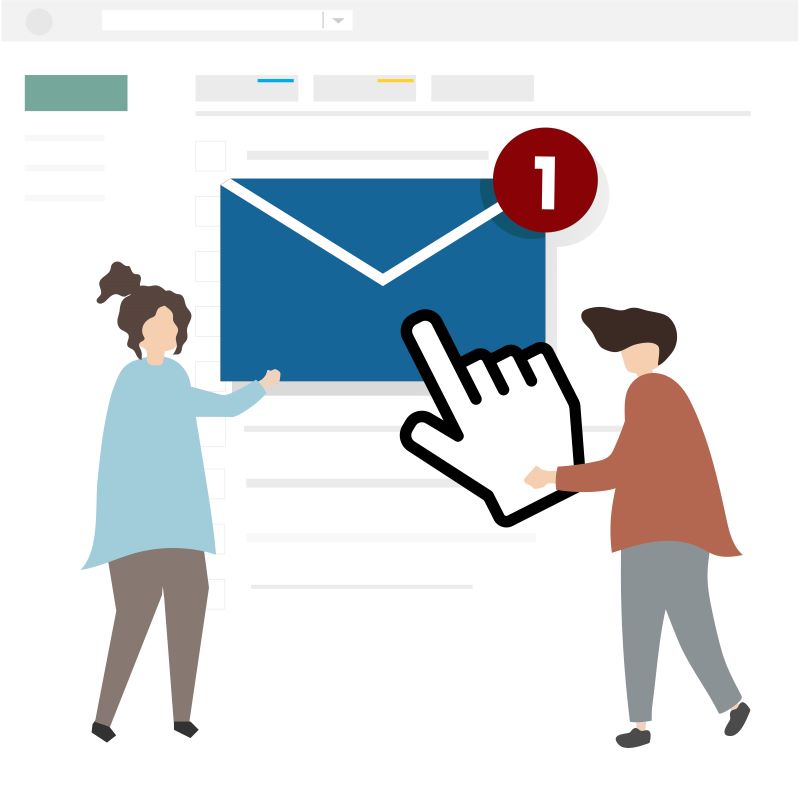Email Etiquettes For Professionals
Email has grown to become one of the most integral components of a professional communication network in today’s digital era. Be it a discussion with your colleagues or a formal message corresponding with clients or business associates, it is crucial to practice proper mail etiquettes to create a favorable impression and maintain an effective communication.
This blog will take you through guidelines emphasizing upon the core principles of proper email etiquette, guaranteeing that your emails are not just efficient, but also characterized by a strong sense of professionalism in the corporate context.

Email Etiquette for professionals: Examples
Here are some email etiquette examples and the guidelines to crafting emails that are not just effective, but also respectful and convey the idea clearly:
1. Clear and Concise Subject Line
One of the biggest ignored parts of corporate email etiquette is drafting a relevant subject line.
Your subject line, serving as the first glimpse into the contents of your mail, should be well-crafted and short, providing a concise understanding of the email’s purpose and significance. People frequently determine whether to open an email based only on the subject line. A strong subject line must be brief, descriptive and must contain a call-to-action. It is crucial to have a compelling subject line, especially if the email is being used for direct marketing.
2. Professional Email Address
It goes without saying that you do not want your emails to be deleted. Avoiding using email addresses that sound informal or unprofessional is one of the simplest methods to make sure that doesn’t happen. When composing business emails, employ an email address that reflects your professionalism. This significantly increases email deliverability and lends you an instant air of credibility. Therefore, exercise caution when selecting your business email address.
3. Use Appropriate Salutation
Address the recipient with a courteous salutation and exercise caution against the use of overly informal language within a professional context. It is crucial to learn how to use formal salutations. Although informal, warm greetings are suitable in many sorts of emails, be sure you are aware of the audience you are writing to, especially with phrases like “Hey there” or “Hi Guys.”
4. Proofread for Errors
Don’t rely exclusively on the default spell checker. While everyone makes the occasional typo, repeating errors and misspellings can give the impression that you’re careless. Your email receivers will undoubtedly catch errors. Review your email carefully before hitting “send” to identify any spelling, grammar, or punctuation errors. Carelessly drafted emails can tarnish your professional image.
5. Brevity is Key
It is imperative to avoid lengthy paragraphs with unnecessary details. As busy professionals appreciate concise communication, get to the point quickly and avoid irrelevant or repetitive details.
6. Refrain Using CAPS LOCK or Exclamation Points
WRITING ENTIRELY IN ALL CAPITAL LETTERS CONVEYS AN IMPRESSION OF SHOUTING through the email. Refrain from using all caps excessively and adhere to proper capitalization rules. If you frequently demonstrate your passion or excitement by using exclamation marks, be mindful to keep your usage to a minimum. Some people have a tendency to use this punctuation mark excessively, utilizing numerous exclamation points within a few sentences. This could come across as overly eager or even immature. Therefore, use caps lock and exclamation marks sparingly and only when it is really appropriate.
7. Use Professional Terminology
Be sure to write your emails in a professional tone and language with the use of appropriate terminologies. Avoid using slang, acronyms, and emoticons unless you share an informal relationship with the recipient. Misinterpretation may occur without matching facial expressions or voice tone.
8. Be Wary of Email Attachments
If there are any attachments enclosed within the email, please make sure they are relevant and necessary. In the email body, ensure that you mention the attachment, check that they are renamed appropriately, and confirm they are virus-free.
9. Reply Promptly
Respond to emails promptly, even if it’s just to acknowledge receipt and let the sender know that you will give a thorough response later. Quick responses show consideration for the sender’s time. Follow up with someone professionally and respectfully if you’re waiting for a response or action from them. Although it is challenging to respond to every email you get, it’s polite to at least try. This includes emails that were unintentionally delivered to you: While not required, a response is always appreciated.
10. Always Use Email Signature
It is essential to use a professional email signature with every mail. This must include your contact information, designation and company information. This makes it effortless for the recipients to contact you. Using email signatures can also increase your ROI rates in case of marketing campaigns. You can also include some publicity, but avoid using too many images, links, catchphrases, or quotations. Set a professional tone by using the same font, type size, and text color throughout your email.
11. Use “Reply All” Judiciously
Don’t always use “Reply All.” Ask yourself if everyone needs to see your response before responding to group emails. Avoid sending pointless “reply all” messages to inboxes.Nobody wants to open or read emails that have nothing to do with them, their department, or their particular duties. When we’re trying to concentrate on anything else, it might be challenging to ignore irrelevant emails, and the constant warnings can be annoying. Avert clicking “reply all” unless you are certain that each person on the list actually needs to get the response. Also, be careful how you use the “CC” and “BCC” fields. Only include recipients who actually require to be informed.
12. Honor Privacy and Confidentiality
Always properly encrypt or safeguard emails containing confidential or sensitive information before sending them. Avoid forwarded emails without the sender’s permission.
13. End Email Gracefully
Add a polite closing to your emails, like “Sincerely,” “Best regards,” or “Thank you.”
14. Use Simple Fonts
It is always best to stick with simple, traditional fonts and their appropriate sizes and colors when it comes to business communication. The primary guideline is that your messaging must be simple to read. Black is the safest and most readable color option while an easy-to-read sans serif like Calibri, Helvetica, or Arial in an 11- or 12-point font size is the best fit for the majority of occasions. Try to use as little Bold, Italics, and Underlining as possible when highlighting text. When utilized excessively, these effects can make critical information appear jumbled.
Things to Keep in Mind
By adhering to these professional email etiquette rules, you can make sure that your communications are not only well-received but also foster a respectful and productive work atmosphere online. Business email etiquette is important for maintaining professional connections with clients, partners, and coworkers. Customizing your message to fit the recipient’s cultural background is a smart idea, if at all possible. You should keep in mind that there may be time zone differences and send your email at the proper time. Segmenting your email list is a good place to start if you want to personalize your messaging. Before sending your email, read it aloud to yourself. It will undoubtedly be interpreted negatively or rudely by the reader if it is offensive to you. Use “please” and “thank you,” and try to avoid using phrases that are extremely negative or dramatic, if you desire favorable results.
Conclusion
Email continues to be one of the most efficient and widely used methods of communication, even though many firms rely on a variety of various channels to communicate efficiently. The current shift in the business world towards largely hybrid work has only strengthened the need of the business world on email to share, organize, and save information. In fact, given how many emails and messages we read and write each day, we may be more prone to making compliance-related errors that could have serious negative effects on our careers. We hope you found this blog helpful!





